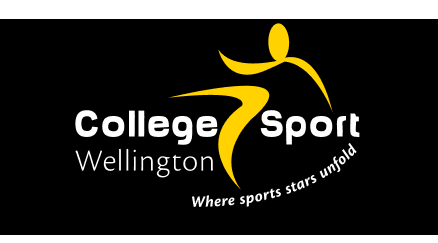
Riding high: Welcome to the Wainuiomata High School Mountain Biking Academy

Story Courtesy of Dana Johannsen (Stuff)
Sport has had a tough few years, much of it stemming from toxic environments at the very top. But one school-based mountain biking programme is eschewing the cult of high performance, and in the process demonstrating the true value of sport. National correspondent Dana Johannsen went along for the ride.
Outside an industrial storage unit tucked away in the shadow of the maunga, the students gather.
They haven’t travelled far to be here. The unprepossessing block of storage sheds on the edge of Waiu Park – one of the Wellington region’s biggest recreational trail parks – is just 900m from their Wainuiomata High School campus, but a world away from the classroom. That’s the whole point, really.
Some appear nervous and apprehensive, others are more excited, their breaths rising to greet the wintry cold air as they chat animatedly about what is to come.
READ MORE:
* Team sports take hit but mountainbiking on roll through Covid
* ‘Football For All’: Programme aims to remove barriers for rangatahi, connect communities
* Sports provider hopes to Ignite youth with extra funding
* Innovative new programme at Golden Bay High school explores students’ interests
Inside the unit that has become the nerve centre of Simon Gilbert’s Dirtskool programme, mountainbikes hang from the walls and ceiling like a colony of bats resting in a cave.

JERICHO ROCK-ARCHER/STUFF
Simon Gilbert runs Dirtskool, a programme that aims to get Wellington students out and about on mountain bikes and developing important life skills through physical activity.
Gilbert efficiently navigates his way around the tight space, lifting a bike from the rack with one hand and picking a helmet up with the other, while nodding in the direction of the tyre pump a student is after. He remains calm and even-tempered, apparently unfazed by the chaos of 20 or so teens all needing something from him at once.
One by one, each student is partnered with a bike, wheeling it out to the forecourt where they busy themselves tinkering with the set-up. The confident ones, mostly the older boys, are soon riding in aimless loops around the concrete pad, bunny-hopping and popping wheelies.
After a double check of the roll and some brief instructions, the Wainuiomata High School Mountain Biking Academy pedal off through the bleak industrial park, down the street and disappear into Waiu Park’s 30km network of trails.

JERICHO ROCK-ARCHER/STUFF
Troy Van Duin takes to the air on the pump track.
They’re out here every Wednesday, ploughing their energy, frustration, and joy into the tracks that run either side of Pukeatua, the maunga that links the Hutt and Wainuiomata. They return at the end of the school day exhausted, exhilarated, sometimes injured, always filthy, and beaming ear to ear.
While it’s referred to as an academy, Matthew Wood, the physical education teacher heading up the programme, wants to make clear “it’s not an elite thing”. The focus of the programme, which is integrated into the school curriculum as part of its My Personal Learning Days, is on building new skills, confidence and authentic leadership experiences.
Back at school, the academy is having tangible results for some in the classroom, with teachers reporting the students more engaged and willing to challenge themselves in other areas.
In a year when the toxicity of elite sport has generated headlines, this group of teens, bonded by the simple objective of getting out there and doing their best, are unknowingly demonstrating the true power of sport.
It is about the bike
Resting in a valley and hemmed in by hills on three sides, the geography of Wainuiomata can feel suffocating. There’s only one road in and out of the Lower Hutt suburb. Once you descend Wainuiomata Hill Road there’s the sense of being cut off from the rest of Wellington. Trapped by the landscape.
When Wood, a physical education teacher originally from Stoke-on-Trent in the UK, arrived at Wainuiomata High School in 2018 he looked to those same hills, and saw opportunity. Here was a rich, natural resource right on the school’s doorstep.
“I had this thing about it,” says Wood.
“I believed it was something that the students should have the opportunity to get out there and use and enjoy. But there was this barrier in that very few of our students had mountainbikes, so it was an activity that wasn’t even on their radar, along with the financial barriers presented to our families of purchasing such an expensive piece of equipment.”
So Wood did some ringing around and found Gilbert, a trained social worker, who runs several initiatives in schools across Wellington with the broad aim of fostering a love of cycling among young people in the region.

JERICHO ROCK-ARCHER/STUFF
Wainuiomata High School physical education teacher Matthew Wood takes roll before hitting the tracks.
One of those initiatives is Dirtskool. It was still in its fledgling stages when Wood came calling, but in Wainuiomata High School Gilbert saw a natural partnership.
“I spend a lot of time biking in Waiu Park and there were not so many young people using these trails here in Wainuiomata, and there was also a big gap with Māori and Pasifika. I thought this is a big opportunity here to introduce mountainbiking to young people in the community,” says Gilbert.
“It’s been a long road, it’s not been easy because obviously there are problems associated with cost. Mountainbikes are horrendously expensive. So I started on a journey to see how I could make that happen.”
Gilbert’s solution was to build the bikes himself.
They arrived in a rainbow of disrepair. Bikes that had been outgrown, replaced, discarded, abandoned or forgotten in the darkest, mustiest corner of the garage were donated to Gilbert’s BikeTec initiative. From this patchwork of old parts, Gilbert and a group of volunteers fashioned new mountainbikes.
In all, the group built 30 mountainbikes, which Gilbert described as “very sound”.
Wood has a different recollection.
“We were riding around on these crappy old bikes,” he laughs.
Let’s settle on rustic, then. The important thing is, they provided a vehicle for Wood to begin taking groups of students out on the trails on a by-arrangement basis, integrating it into the school’s physical education offerings.

JERICHO ROCK-ARCHER/STUFF
Isiah Buri, Cody Jowitt, Troy Van Duin, Lackland Adam-Cashmore and Andy Vichet at the Wainui Hill lookout.
But the real “stroke of luck” for Wood came via a setback for Gilbert’s organisation, when the trust’s funding source disappeared in 2019. Wood, who is also a senior dean at Wainuiomata High School, struck a deal with Gilbert. Gilbert could store his container on the school grounds, and the students could have access to the bikes at no charge.
Having regular access to the equipment meant Wood was able to expand the programme, building mountainbiking into the curriculum with a focus on long-term skill development and broadening the educational outcomes.
The Wainuiomata High School Mountain Biking Academy was born.
For many of the students in the programme, it was their first experience spending time out in the natural bush, so the emphasis, initially, was put on developing confidence, personal responsibility and risk management skills while exploring the environment. Mountainbiking is not an intuitive skill, says Gilbert.
“Obviously lots of young people ride bikes, and riding a bike is just about balance and turning the pedals. It’s not like that when you get out on these trails, because they are very rough. There’s lots of different environments out there – roots, mud, lots of hills, off-cambers, drops.
“So it is really a journey of empowerment, taking novice riders and giving them the skills and confidence to safely enjoy trail riding.”
The tracks at Waiu Park start at level two, which is described as a mostly flat trail, with few features on it, and progress to level five, where the riders experience more challenging terrain – steep climbs, difficult drops, rocks, and fast downhill sections, requiring advanced bike-handling skills.
For those that have been in the programme from the outset, they have progressed from riding grade two trails, through to grade five.

JERICHO ROCK-ARCHER/STUFF
The Waiu Park trails allow the students to graduate from beginner to advanced riders.
“A lot of these more experienced riders are now doing the hardest trails on the park, so they are fully confident to do that, which is fantastic,” says Gilbert.
“But I think the biggest win for me is seeing previously inactive youth find a real love of biking and the outdoors, to the point where some have actually now purchased their own equipment and are riding in their spare time.”
These wins have led to further growth and outside investment in Gilbert’s programme.
Through the Nuku Ora (formerly Sport Wellington) Tū Manawa Active Aotearoa programme, Gilbert has been able to secure funding to buy two fleets of new mountainbikes, and shift his operations down the road from Wainuiomata High School.
Several schools throughout the region have accessed the Dirtskool programme, but Gilbert says the weekly interaction he gets with the rangatahi of Wainuiomata High School has been especially rewarding.
“You get to really know the students and see them develop over a long period of time. It has been extremely gratifying to see.”
Outside is good for the inside
As the group sets off through the industrial park towards Waiu Park, the voices of year 11 students Mason Jensen and Reihan Kusnadi can be heard clearly above the rest. The pair have been tasked with leading the riders around the grade two track for the warm-up. With three newcomers to the group this morning, the pair take care to ensure no-one is left behind.
Jensen and Kusnadi are in their third year of the programme, albeit the last two years were curtailed by Covid shutdowns, and considered among the strongest riders in the group. But Jensen can still remember what it was like when he first started out.
“I was really unfit, I was slightly overweight, and it was really challenging at the start, and then over time it just got easier and easier,” he says.

JERICHO ROCK-ARCHER/STUFF
Matthew Wood, left, Mason Jensen, Simon Gilbert.
The transformation hasn’t just been a physical one. From having to have his arm twisted to join the academy, Jensen is now an enthusiastic student of the sport.
“He was almost disengaged and probably quite energetic in the wrong way. He was quite confrontational and aggressive, and less likely to want to work in with you. He was a handful, let’s say,” says Gilbert.
“He’s actually really engaging now. He’s just become much easier to work with, and you can see he has got a passion now, and he is focusing all his energy into it, and it has really changed him.”
Jensen’s mother, Donna, agrees with Gilbert’s assessment.
“Oh, he was a firecracker,” she laughs.
“He had a short fuse, you only had to look at him sometimes, and he would get angry. But since Mr Wood got him into the mountainbiking programme he is a lot calmer. It is a stress release for him.”
Donna isn’t sure what it is about the sport that has led to the change in her son. She says she is a firm believer that “being outside is good for the inside”, but she thinks it is more than that.
Mountainbiking is an activity that requires such profound focus, that it allows the students to get caught up in a moment that divorces them from the world, from school, from anything other than self.
“You have to be careful on these bikes because it has its dangers, so the concentration that is involved seems to help calm him and centre him. You’re not thinking of other things, but what’s in front of you.”
Jensen says for him, the biggest challenge of mountainbiking is the mental side. He says he has had to learn to trust in his skills and push himself to “commit”, especially when it comes to the jumps.
The reward is the feeling of accomplishment when he executes a new skill for the first time, or navigates a difficult section of track.

JERICHO ROCK-ARCHER/STUFF
Mason Jensen has been in Wainuiomata High School’s mountain biking programme since year 9.
“I have a big issue with committing to stuff and trusting that I can do it, but when I do commit to stuff, it is like a big sigh of relief. It’s like ‘wow that was pretty cool, I don’t know why I was scared of that’,” he explains.
“There’s been times when I have been able to do a certain thing, but then I had a crash, so that destroyed my confidence of doing it. But then it is just re-learning it and perfecting it, so you can build your confidence up again.”
That confidence Jensen has developed has bled over into other areas of his life, according to his mum. Donna says the 16-year-old, has become a lot more social and willing to engage with people he previously wouldn’t. He also took the initiative to get himself a part-time job in an outdoors store, which has fuelled his interest in bike mechanics.
Jensen also reckons he is doing a lot better in school.
“I feel like I have been more motivated to come to school because normally if you misbehave in school you won’t be able to go riding, so it makes me want to go to school more and work hard, so I don’t miss out.”
Finding the spark
The link between physical activity and achievement in the classroom is one that hasn’t been mined in depth in quantitative research in New Zealand.
“It’s one of those things we intuitively know, but it is quite hard to track research down,” says Roger Wood, Sport NZ’s Rangatahi Lead.
“There is a lot to that whole idea about finding the thing that is going to trigger kids to achieve to feel confident and positive about themselves – that might not be sitting in a maths class, it might be out biking. But once they find that thing that provides that spark for them to learn and develop as young people, then it transfers into other areas.
“The research also tells us that physical activity is linked to all aspects of wellbeing, and we also know enhanced wellbeing is the forerunner to any academic achievement.”
It’s a message Sport NZ has been increasingly trying to push, with improving the rates of physical activity among 12-18 year-olds one of the organisation’s core pillars of work. The age-group has been targeted as part of Sport NZ’s 2024 strategy in recognition that this is the most “at risk” time for reducing physical activity.
Statistics show that from ages five to 13 participation in sport and recreation increases. But once kids reach their teenage years, it is the first time in the age cohort that participation drops. From there, it never recovers.
“The habits and the values and outcomes that are established in this age group endure, so it is just so critical that we provide a great quality experience for kids in this age group,” says Wood.

JERICHO ROCK-ARCHER/STUFF
Andy Vichet gets up some pace on the downhill trail.
Sport NZ’s Voice of Rangatahi report, published in May, found a move away from a “one size fits all” sports structure will help grow engagement and participation in young people. The data revealed that the biggest barrier for teens to engage with sport and recreation is that they are too busy, with school work, jobs, family commitments and social pressures all ramping up at around year 11.
Wood says the research findings suggest that traditional organised sport does not fit into young people’s lives.
“Young people might have part-time jobs, or be required to look after siblings, so their after-school life is super busy. So schools are obviously a major opportunity where we can make sure we can provide a healthy physical activity environment when we know they are all together.”

JERICHO ROCK-ARCHER/STUFF
Kayla Pickering (left) and Shyla Baikie (right) are among a growing number of girls signing up to Wainuiomata High School’s mountainbiking programme.
Wood sees a lot of parallels between Wainuiomata High School’s mountainbiking programme and the Sport in Education initiative trialled by Sport NZ in selected schools from 2013-2018.
Part of the success of the mountainbiking academy is that it is built into the curriculum as part of the school’s My Personal Learning Days, where the students take charge of their own learning based on their individual goals.
Senior dean Matthew Wood, no relation to Roger, says mountainbiking is the gateway for enquiry into other areas. Jensen has picked up an interest in bike mechanics and kinematics, Kusnadi ties in biking with his other passion of photography and videography, while others have shown an interest in helping improve Waiu Park and helping develop more tracks.
“Some of the students are getting real authentic leadership experience now when they are out there. They are given a lot of responsibility,” he says.
Wood’s aim now is to get more girls involved with the programme, which up until the middle of this year only had boys participating. The challenge for Wood is the same as many sports leaders working in the secondary education space face – an even more marked drop-off in participation among teenage girls.
The morning Stuff first visited, year 11 students Kayla Pickering and Shyla Baikie were giving it a crack for the first time. Since then, they have become regular participants and encouraged several more girls to join them.
“It just takes one spark, and then we’re away,” says Wood.

JERICHO ROCK-ARCHER/STUFF
While the academy is dominated by male students, the aim is to encourage more girls to take part.
The uphill battle
At the crest of the maunga, the students gather.
Red-faced and puffing, mud splattered across their clothes, they seem to pay no mind to their image or appearance. Instead they enthusiastically dissect the morning’s ride, analysing each other’s “style” as they take in the views across the harbour to Wellington.
“It’s a pretty special place on days like this,” says Wood, nodding at the glistening u-shaped stretch of water below.
“When we get to the lookout it is always a relief, like a reward for the hard work.”
More recently, the students are beginning to appreciate the journey, as much as the destination.
The biggest change Wood has noticed across the group is not in their confidence to let rip downhill, but their ability to grind it out on the uphill sections.
“Twelve months ago, there was plenty of moaning about biking uphill, plenty of pushing, and plenty of ‘can we just go downhill?’,” says Wood.
“Many of these students weren’t great with levels of resilience, within the classroom or on the hill. I’m pleased to say that both aspects have taken a positive turn.”
After a rest and some time to take on some food and fluids, the group sets off again into the trails. Eventually, the track will take them back to where they began.


ADDRESSES
Location
Level 1 223 Thorndon Quay
Thorndon, Wellington
Postal
PO Box 26 042
Wellington 6442





 Admin Login
Admin Login